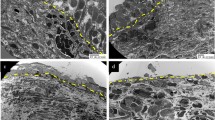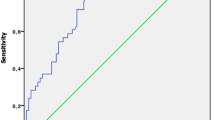Abstract
Asymptomatic, atraumatic hematuria is a worrisome clinical sign for a patient that usually prompts a visit to a urologist. Hematuria is classified as microscopic versus gross; the evaluation for gross hematuria differs from that for microscopic hematuria, and the most important differentiating factor is the patient's age. The major causes of hematuria differ between children and adults, and the evaluation should reflect this. Renal disease is more common in children and malignancy more common in adults. The application and utility of laboratory tests, radiological studies, and cystoscopy are well established in adults but are more variable in children. Follow-up of hematuria after a negative evaluation is becoming more limited in adults but should be routine for children.
Key Points
-
The evaluation of children and adults with hematuria differs because renal disease is a more common etiology in children and malignancy is more common in adults
-
Although screening urinalysis is not routinely performed in adults except for pregnant women, screening urinalysis in children should occur at 5 years of age and at sexually active adolescence
-
Along with dipstick urinalysis, microscopic analysis of urinary sediment from a centrifuged sample should be performed to confirm the presence of red blood cells and assess for abnormal morphology
-
Unlike for adults with hematuria, cystoscopy is rarely indicated in the evaluation of children with hematuria
-
After an initial negative evaluation, follow-up for children with hematuria should be annual with repeat urinalysis and blood pressure measurement; follow-up for adults is becoming less routine
This is a preview of subscription content, access via your institution
Access options
Subscribe to this journal
Receive 12 print issues and online access
$209.00 per year
only $17.42 per issue
Buy this article
- Purchase on Springer Link
- Instant access to full article PDF
Prices may be subject to local taxes which are calculated during checkout

Similar content being viewed by others
References
McDonald, M. M., Swagerty, D. & Wetzel, L. Assessment of microscopic hematuria in adults. Am. Fam. Physician 73, 1748–1754 (2006).
Phadke, K. D., Vijayakumar, M., Sharma, J. & Iyengar, A. Consensus statement on evaluation of hematuria. Indian Pediatr. 43, 965–973 (2006).
Bergstein, J., Leiser, J. & Andreoli, S. The clinical significance of asymptomatic gross and microscopic hematuria in children. Arch. Pediatr. Adolesc. Med. 159, 353–355 (2005).
Grossfeld, G. D. et al. Asymptomatic microscopic hematuria in adults: summary of the AUA best practice policy recommendations. Am. Fam. Physician 63, 1145–1154 (2001).
Khadra, M. H., Pickard, R. S., Charlton, M., Powell, P. H. & Neal, D. E. A prospective analysis of 1,930 patients with hematuria to evaluate current diagnostic practice. J. Urol. 163, 524–527 (2000).
Quigley, R. Evaluation of hematuria and proteinuria: how should a pediatrician proceed? Curr. Opin. Pediatr. 20, 140–144 (2008).
Pan, C. G. Evaluation of gross hematuria. Pediatr. Clin. N. Am. 53, 401–412 (2006).
Praga, M. New insights into familial microhematuria. Curr. Opin. Nephrol. Hypertens. 8, 173–177 (1999).
Sox, C. M. & Christkas, D. A. Pediatrician's screening urinalysis practices. J. Pediatr. 147, 362–365 (2005).
Kitagawa, T. Lessons learned from the Japanese nephritis screening study. Pediatr. Nephrol. 2, 256–263 (1988).
Hisano, S. et al. Asymptomatic isolated microhaematuria: natural history of 136 children. Pediatr. Nephrol. 5, 578–581 (1991).
Park, Y. H. et al. Hematuria and proteinuria in a mass school urine screening test. Pediatr. Nephrol. 20, 1126–1130 (2005).
Woolhandler, S., Pels, R. J., Bor, D. H., Himmelstein, D. U. & Lawrence, R. S. Dipstick urinalysis screening of asymptomatic adults for urinary tract disorders: hematuria and proteinuria. JAMA 262, 1214–1219 (1989).
Pels, R. J., Bor, D. H., Woolhandler, S., Himmelstein, D. U. & Lawrence. R. S. Dipstick urinalysis screening of asymptomatic adults for urinary tract disorders: bacteriuria. JAMA 262, 1220–1224 (1989).
Nieder, A. M. et al. Are patients with hematuria appropriately referred to Urology? A multi-institutional questionnaire based survey. Urol. Oncol. doi:10.1016/j.urolonc.2008.10.018.
Grossfeld, G. D. et al. Evaluation of asymptomatic microscopic hematuria in adults: the American Urological Association best practice policy—part I: definition, detection, prevalence, and etiology. Urology 57, 599–603 (2001).
Sutton, J. M. Evaluation of hematuria in adults. JAMA 263, 2475–2480 (1990).
Greenfield, S. P., Williot, P. & Kaplan, D. Gross hematuria in children: a ten-year review. Urology 69, 166–169 (2007).
Nieuwhof, C. M., de Heer, F., de Leeuw, P. & van Breda Vriesman, P. J. Thin GBM nephropathy: premature glomerular obsolescence is associated with hypertension and late onset renal failure. Kidney Int. 51, 1596–1601 (1997).
Praga, M. et al. Association of thin basement membrane nephropathy with hypercalciuria, hyperuricosuria and nephrolithiasis. Kidney Int. 54, 915–920 (1998).
Hebert, L. A. et al. Loin pain-hematuria syndrome associated with thin glomerular basement membrane disease and hemorrhage into renal tubules. Kidney Int. 49, 168–173 (1996).
Spetie, D. N. et al. Proposed pathogenesis of idiopathic loin pain–hematuria syndrome. Am. J. Kidney Dis. 47, 419–427 (2006).
Trachtman, H., Weiss, R. A., Bennett, B. & Greifer, I. Isolated hematuria in children: indications for renal biopsy. Kidney Int. 25, 94–99 (1984).
Youn, T., Trachtman, H. & Gauthier, B. Clinical spectrum of gross hematuria in pediatric patients. Clin. Pediatr. 45, 135–141 (2006).
Lee, Y. M. et al. Analysis of renal biopsies performed in children with abnormal findings in urinary mass screening. Acta Paediatr. 95, 849–853 (2006).
Parekh, D. J., Pope, J. C., Adams, M. C. & Brock, J. W. The association of an increased urinary calcium-to-creatinine ratio, and asymptomatic gross and microscopic hematuria in children. J. Urol. 167, 272–274 (2002).
Turi, S. Long-term follow-up of patients with persistent/recurrent, isolated haematuria: a Hungarian multicentre study. Pediatr. Nephrol. 3, 235–239 (1989).
Andres, A. et al. Hematuria due to hypercalciuria and hyperuricosuria in adult patients. Kidney Int. 36, 96–99 (1989).
Kasapcopur, O., Sever, L., Tasdan, Y., Caliskan, S. & Arisoy, N. Hypercalciuria and hematuria in juvenile rheumatoid arthritis. J. Rheumatol. 25, 993–996 (1998).
Cattini Perronne, H., Bruder Stapleton, F., Toporovski, J. & Schor, N. Hematuria due to hyperuricosuria in children: 36-month follow-up. Clin. Nephrol. 48, 288–291 (1997).
Cohen, R. A. & Brown R. S. Microscopic hematuria. N. Engl. J. Med. 348, 2330–2338 (2003).
Grossfeld, G. D. et al. Evaluation of asymptomatic microscopic hematuria in adults: the American Urological Association best practice policy—part II: patient evaluation, cytology, voided markers, imaging, cystoscopy, nephrology evaluation, and follow-up. Urology 57, 604–610 (2001).
Kelley, J. D., Fawcett, D. P. & Goldberg, L. C. Assessment and management of non-visible haematuria in primary care. BMJ 338, 227–232 (2009).
Mishriki, S. F., Nabi, G. & Cohen, N. P. Diagnosis of urologic malignancies in patients with asymptomatic dipstick hematuria: prospective study with 13 years' follow-up. Urology 71, 13–16 (2008).
Author information
Authors and Affiliations
Corresponding author
Ethics declarations
Competing interests
L. D. Shortliffe declares that she is a stock-holder/director of Vivus. W. H Tu declares no competing interests.
Rights and permissions
About this article
Cite this article
Tu, W., Shortliffe, L. Evaluation of asymptomatic, atraumatic hematuria in children and adults. Nat Rev Urol 7, 189–194 (2010). https://doi.org/10.1038/nrurol.2010.27
Published:
Issue Date:
DOI: https://doi.org/10.1038/nrurol.2010.27
This article is cited by
-
Harnblasentamponade – ein urologischer Notfall
Die Urologie (2024)
-
Hämaturie im Kindesalter
Monatsschrift Kinderheilkunde (2011)



